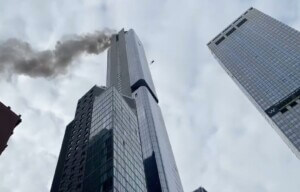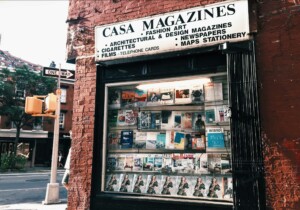Restorative Ground, a placemaking installation from New York-based feminist design platform WIP Collaborative, has been named the winning proposal in the Care for Hudson Square competition.
The Urban Design Forum-hosted competition/coronavirus recovery initiative was launched in partnership with Hudson Square Properties and the Hudson Square Business Improvement District in search of singular interactive installations designed to help reactivate the streetscapes of Hudson Square, a small neighborhood in Lower Manhattan, while also bringing together the greater community to congregate, heal, and let loose as New Yorkers emerge from months of social isolation brought on by the pandemic.
Reads the brief for the two-round competition, which kicked off in early July with an RFQ:
We will welcome design that responds creatively, dynamically, and responsively to changing public health guidance on physical distancing, while inviting New Yorkers to safely celebrate city life. We aim to build a project that reactivates the public realm while supporting an agile approach in its management and the care of its users.
We welcome the design community to inspire us with public realm projects that exemplify how cultural partners can return to the public realm, and support the healing of the city. We will encourage modular, easily deployed, and easily maintained designs that may be potentially reproduced in other neighborhoods of New York City. And we will also invite online interaction to share the site-specific installation with our broad constituency of architects, developers, advocates and academics, as well as the broader public to discuss the challenges of designing in the public realm in the evolving public health landscape.
Three different possible sites were considered for Care for Hudson Square; WIP Collaborative’s winning Restorative Ground—described in a press statement as being a “node of activation within the network of outdoor public spaces and existing creative agencies in the neighborhood”—will be located on King Street between Hudson and Greenwich Streets. The other two potential sites were along “Little Sixth Avenue” between Spring and Broome Streets, and a privately-owned public space adjacent to 375 Hudson Street.
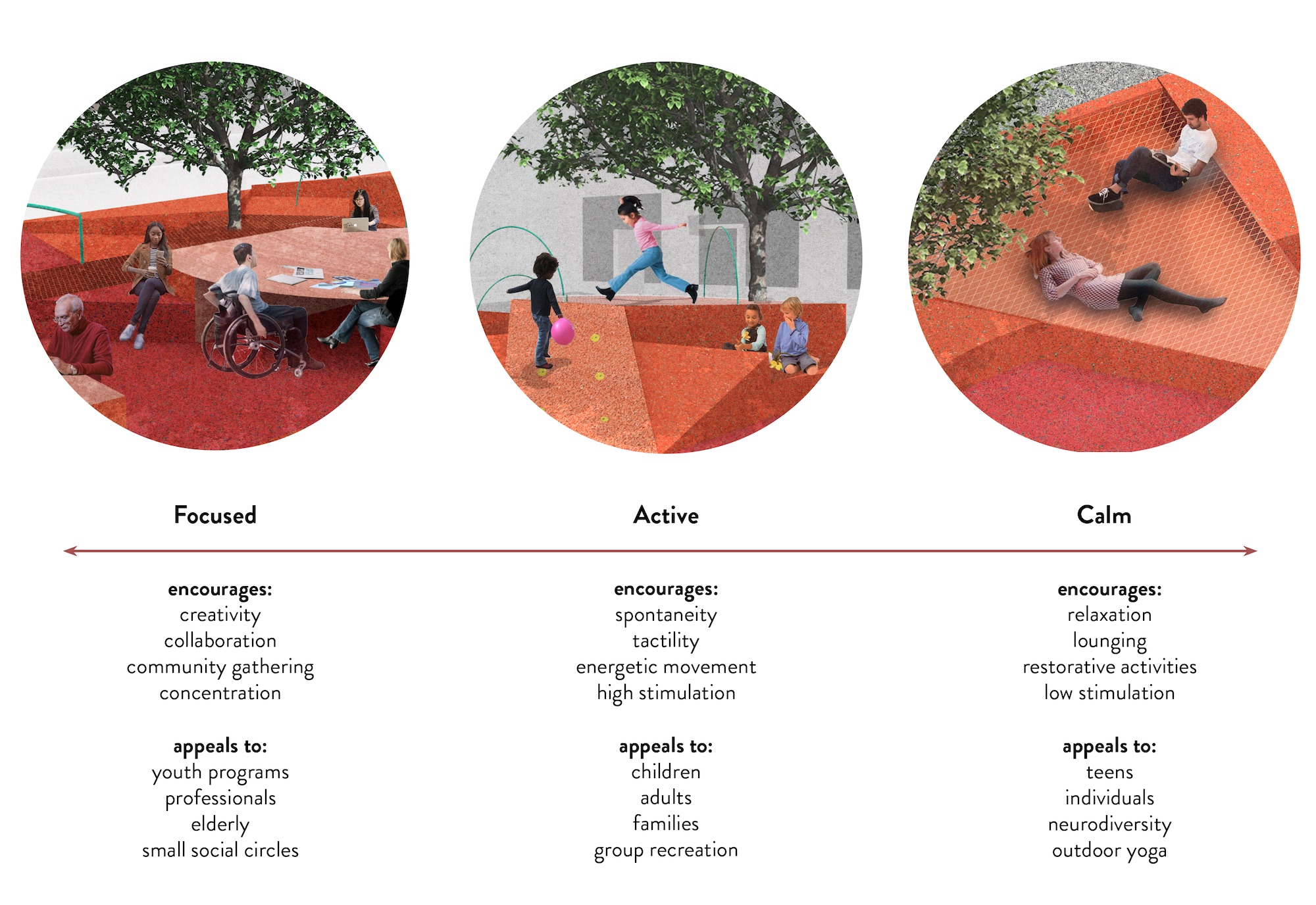
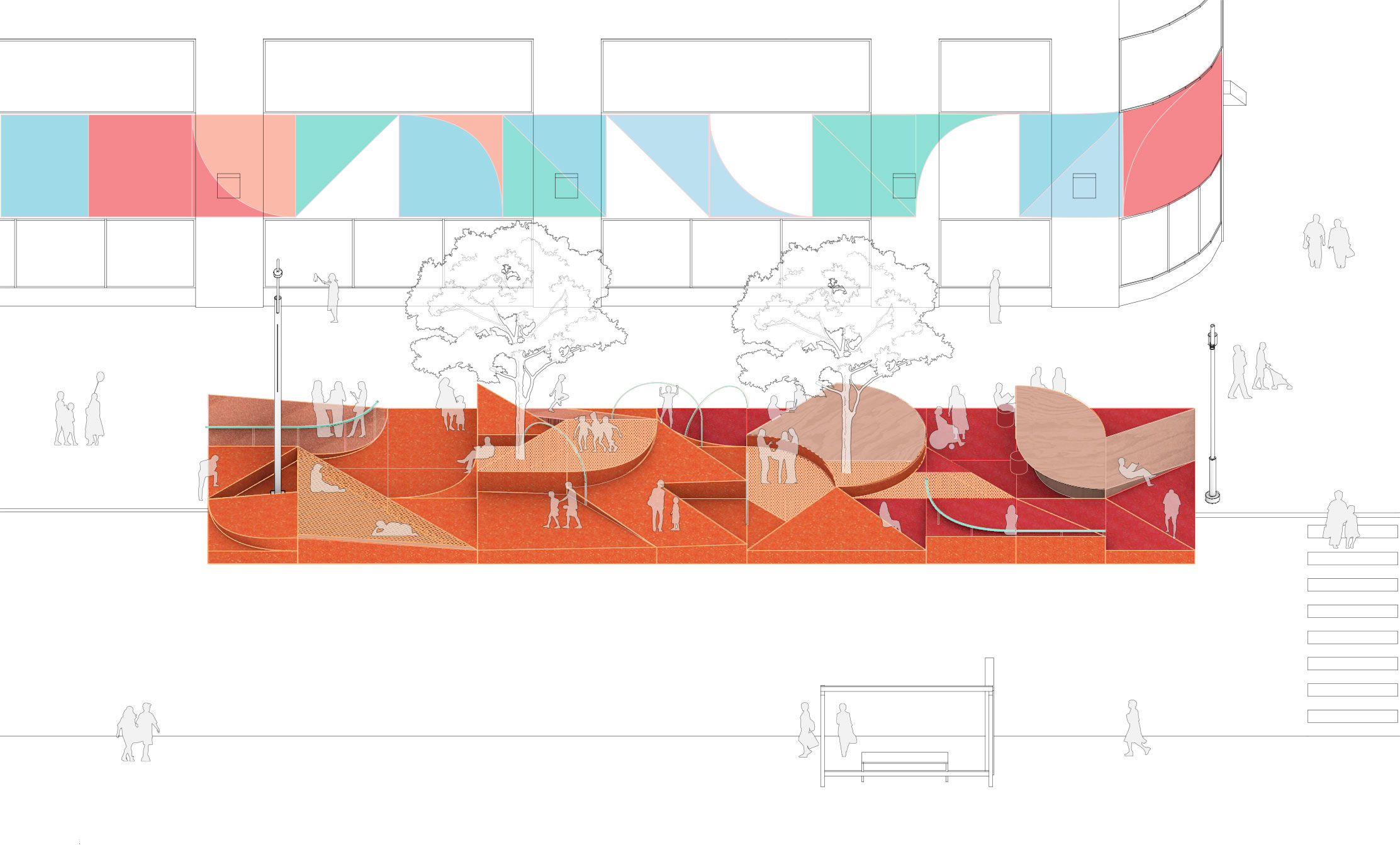
WIP Collaborative’s seven-member team was composed of independent designers and their practices: Abby Coover (Overlay Office), Bryony Roberts (Bryony Roberts Studio), Ryan Brooke Thomas (Kalos Eidos), Elsa Ponce, Sera Ghadaki, Sonya Gimon, and Lindsay Harkema of WIP Studio. (The “WIP” in WIP Studio and WIP Collaborative, an offshoot of the Brooklyn-based architectural practice, stands for Work in Progress | Women in Practice.)
A new neighborhood destination designed to serve as a venue for “a range of experiences, activities, and interactions to occur between residents, community members, and the broader public,” Restorative Ground will take the form of a protean, wedge-shaped public space that straddles an existing parking lane and caters to any and all users. Fabricated from brightly-hued recycled rubber and incorporating other familiar materials such as synthetic turf, the textural quality of the installation (composed of 33 eight-by-eight wood-framed tiles, each of them completely unique in form) will be both gentle and durable and, for some users, likely nostalgia inducing.
The space will be divided into three distinct experiential environments. The Calm Zone features a large net hammock situated beneath a shade-providing tree located in the center of the space. Centered around undulated tables and freestanding seating, the Focused Zone lends itself to both solitary individual use as well as collaboration and socialization between neighbors and strangers. Lastly, the Active Zone, a decidedly more kid-friendly area ripe for exploring and getting a bit rambunctious, sports a “small ‘peak’ of sloping planes and heightened textures.” The design of Restorative Ground is drawn in part from WIP Collaborative’s ongoing research into “inclusive play spaces for neurodiverse populations of all ages and abilities.”
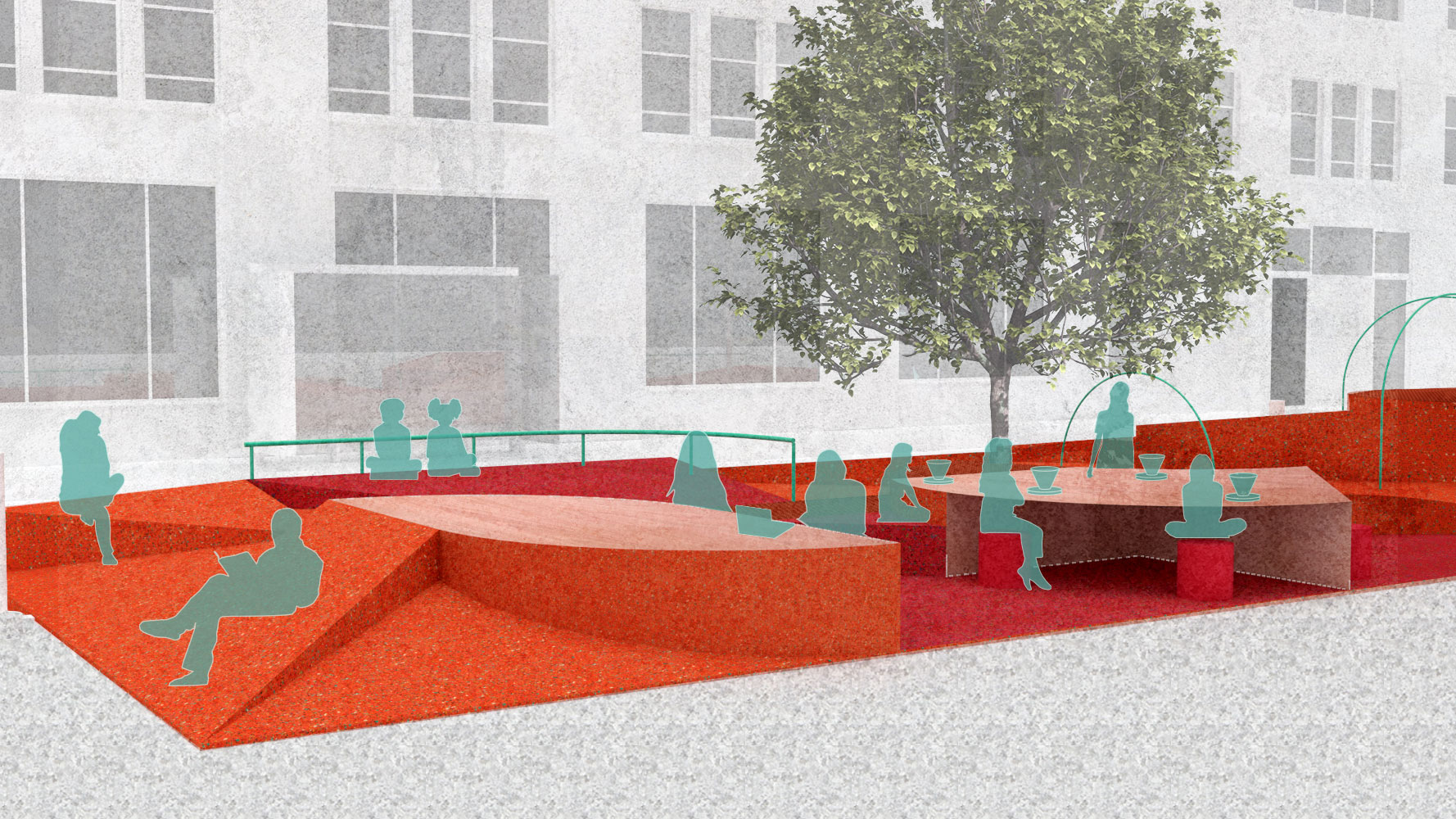
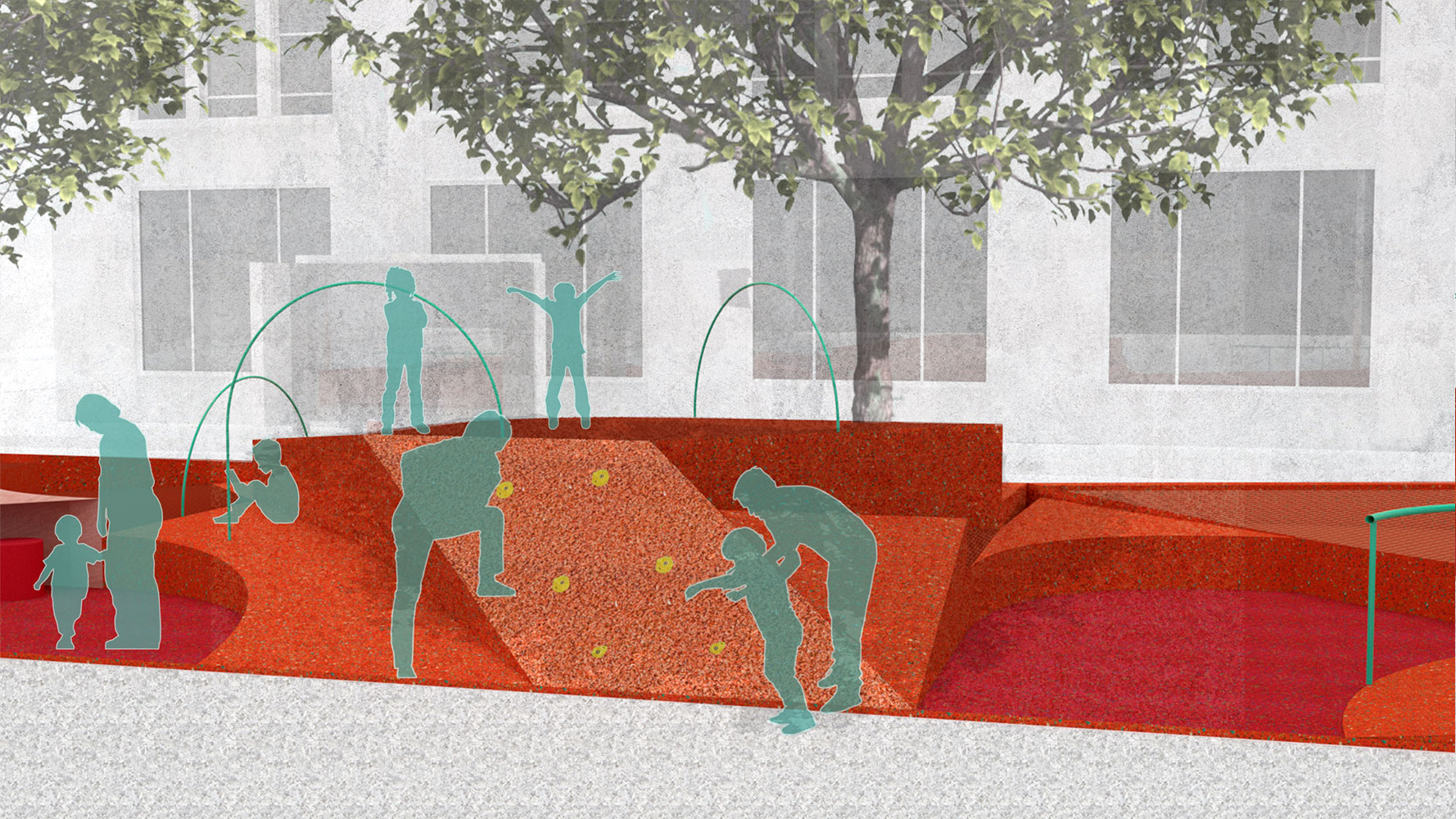
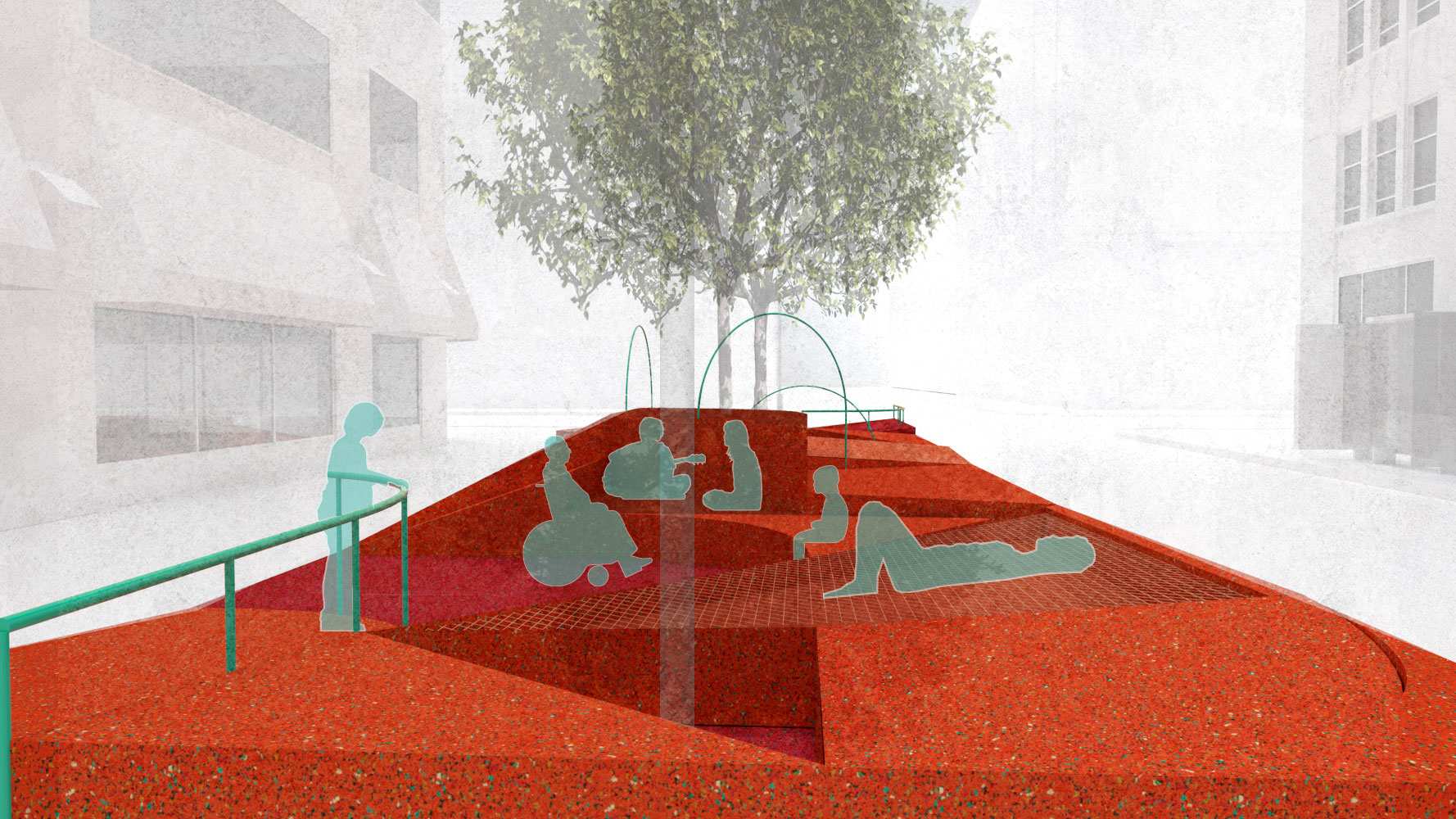
Restorative Ground’s integrated lighting solutions, including solar-powered handrail lighting, are meant to create a safe and subtle illumination while “staying respectful to the environment and urban contexts.” Per a press statement, the entire street-side environment responds to existing conditions and DOT regulation, and its modular, replicable design could potentially be realized elsewhere within other neighborhoods.
The selection committee for the recently concluded competition included, among others, representatives from a handful of relevant city departments; Ellen Baer, president and CEO of Hudson Square BID, and architects and designers from practices including Moody Nolan, Kohn Pedersen Fox, Studio Gang, and Snøhetta.
You can learn more about Restorative Ground and the finalist proposals for other two Hudson Square site from Taller KEN and Dash Marshall with Public Policy Lab here. Construction work on Restorative Ground should kick off in the coming weeks.









